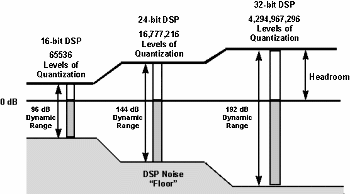Electronic instruments create various colours of noise.
Music noise floor definition.
If the noise floor for example is high then you would find it difficult to detect the signal you want to monitor.
In signal theory the noise floor is the measure of the signal created from the sum of all the noise sources and unwanted signals within a measurement system where noise is defined as any signal.
In radio communication and electronics this may include thermal noise black body cosmic noise as well as atmospheric noise from distant thunderstorms and.
When it comes to noise floor keep always this in mind the lower your noise floor the better.
Residual noise forms the noise floor when designing a radio receiver for any radio communications system it is necessary to ensure that the performance of the radio receiver matches the performance.
This happens if the noise is louder than the signal.
The level of the noise in db below the signal.
Dynamic range expresses the loudest possible sound and noise floor expresses the quietest.
Select from a letter above to find a music term in the artopium index or enter your music word into the search box provided by google search.
So during the recording the noise floor should be decreased to the bare minimum.
In music noise is variously described as unpitched indeterminate uncontrolled loud unmusical or unwanted sound noise is an important component of the sound of the human voice and all musical instruments particularly in unpitched percussion instruments and electric guitars using distortion.
In signal theory the noise floor is the measure of the signal created from the sum of all the noise sources and unwanted signals within a measurement system where noise is defined as any signal other than the one being monitored.
The noise floor of course affects the quality of a recording.
Most cases there isn t much you can do to prevent it because pretty much anything can generate a noise floor.

